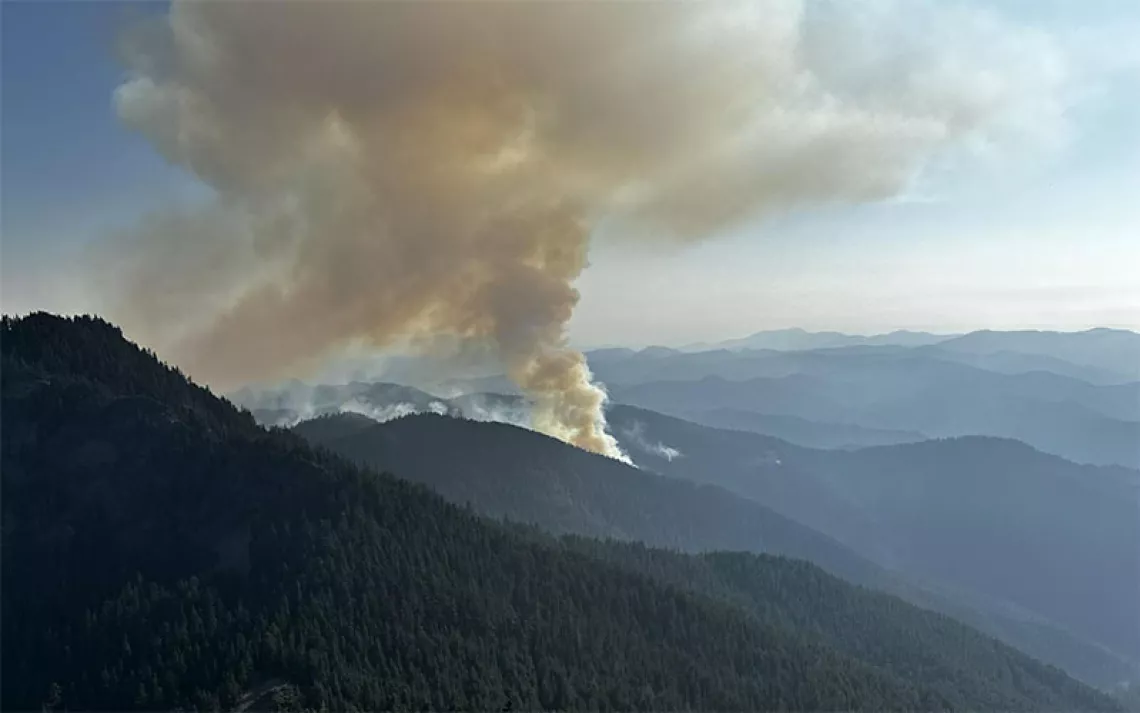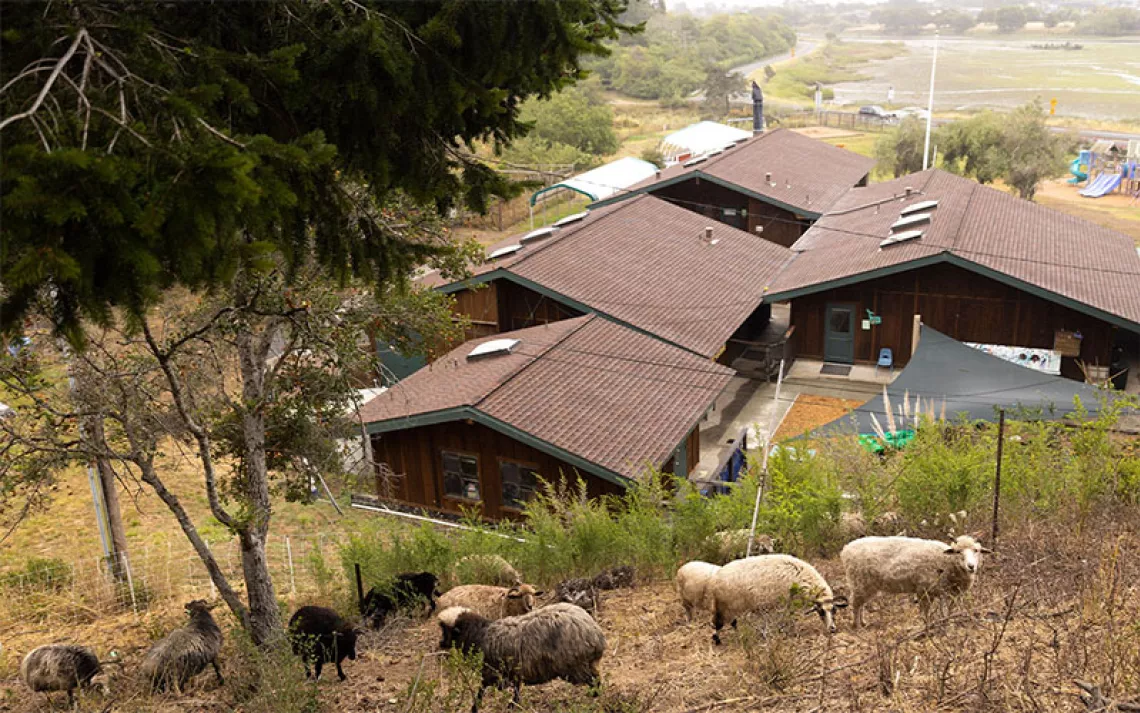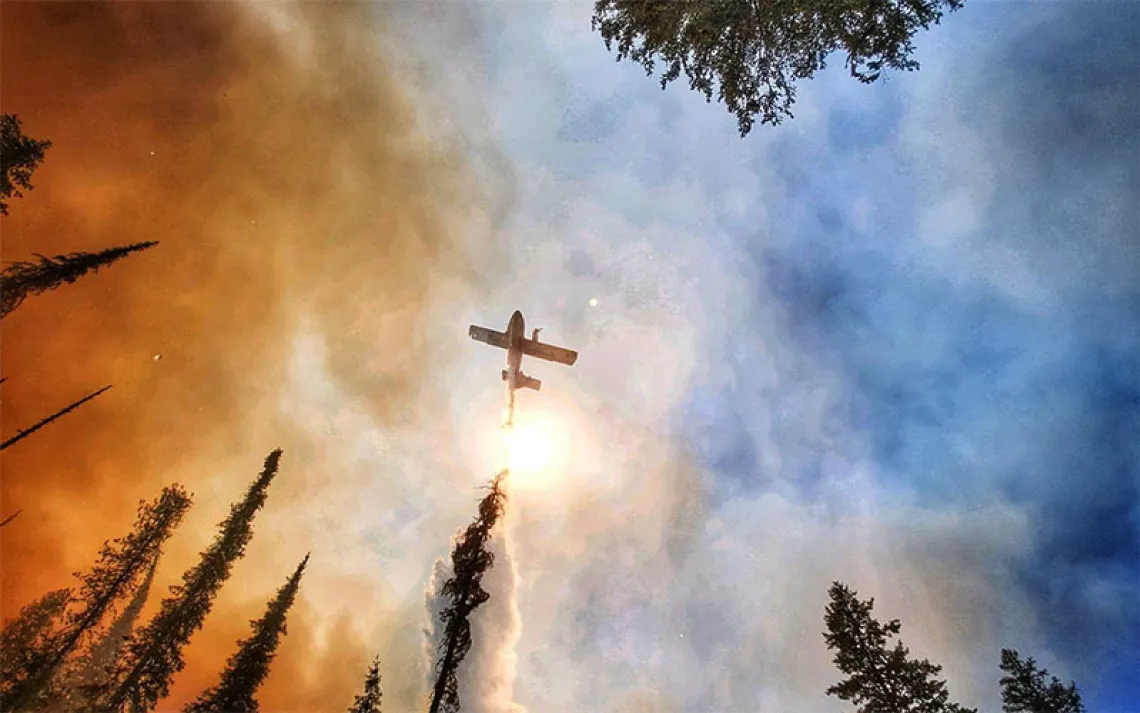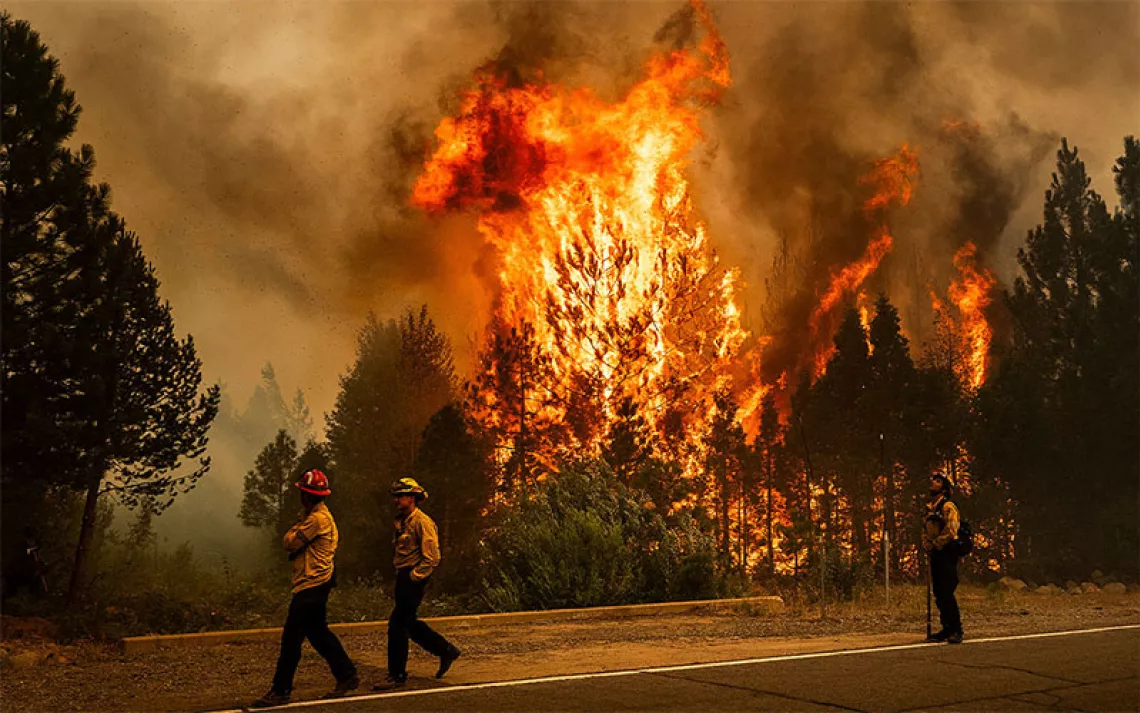How Are We Going to Fight Wildfires and COVID-19?
Short answer: We’re still figuring it out.

Firefighters at the Camarillo Springs forest fire in 2013 | Photo by iStock/LAGuy
It’s fire season. Again. Wildfires have already popped up in Florida, Utah, Arizona, and New Jersey. The Southwest and Northern California are experiencing extreme drought.
It’s bad timing: Wildland firefighting involves large groups of firefighters, often from multiple states, coming together and working in close proximity, often in remote areas where access to running water is limited. These conditions mean that COVID-19 could spread rapidly through a firefighting crew as well as through temporary shelters that house wildfire evacuees. Inhaling smoke will make firefighters, evacuees, and anyone downwind more vulnerable to the virus—and a nationwide shortage of N95 masks, which filter smoke particles, means that residents will have a harder time protecting themselves from smoke inhalation.
Meanwhile, states are reopening nonessential businesses and spaces where the virus could spread. It doesn’t help that for decades, some people managing federal fires have been political appointees with “nary a lick of fire experience or expertise at all,” according to Casey Judd of the Federal Wildland Fire Services Association, a group that advocates for wildland firefighters.
Coordinating various federal, state, and local fire agencies throughout a fire season has always been a logistical puzzle. This year the coronavirus amplifies that challenge. When asked about their plans for this wildfire season, agencies had different responses—and their own guidelines for simultaneously tackling wildfires and COVID-19. Several regional guidelines acknowledge that best management practices “may not offer the detail that some personnel would like . . . the COVID-19 pandemic is an evolving situation that has never been encountered before in wildland fire management.”
The Fire Management Board, which represents the federal agencies that oversee wildland fire, has issued interim guidance for preventing COVID-19 outbreaks on the job. The federal guidelines ask that firefighters employ what they call Module as One. At the beginning of the season, every firefighter will be required to isolate for 14 days before joining their crew. Then that group becomes a kind of “family unit” that will work together for the rest of the season, says Kaili McCray, the chair of the National Wildfire Coordinating Group’s Emergency Medical Committee. If a firefighter does come down with symptoms of COVID-19, McCray says, they will be isolated (and tested, if testing is available in the area).
Katrina Mohr, a senior firefighter with the New Meadows Ranger District in Idaho, says that her crew’s seasonal members went into quarantine before they began work. “I felt a kind of sigh of relief once we hit two weeks and no one felt sick or showed any symptoms,” she says. Frequent hand washing and being careful about what gets touched at camp are already ingrained in wildland firefighting because of the risk of “camp crud,” a catchall term for the upper respiratory illnesses that spread quickly through wildfire camps. So far this season, says Mohr, she’s never had to be less than six feet away from someone outside her crew, except when riding in vehicles, where everyone wears masks. It’s already standard practice for federal firefighters to sleep in personal tents, so they’re not bunking up in close quarters.
The Forest Service has canceled in-person fire training and prescribed burns in some regions, out of concern that requiring firefighters to travel and gather in groups without an actual fire in progress is too great of a risk. In areas like California, where wildfires are guaranteed every fire season, crews are continuing to cut fire breaks and inspect homes to make sure that any vegetation or other flammable objects have been cleared away, says Thom Porter, director of CalFire, the fire department of the California Natural Resources Agency.
In the past, California has relied heavily on prison work crews, and according to the California Department of Corrections and Rehabilitation, at least one prescribed burn this year used prisoners. As of June 30, the CDCR had quarantined 12 of California’s 43 inmate fire camps due to a coronavirus outbreak in a prison that trains fire crews. To address the nearly 800-crewmember deficit, Robert Foxworthy of CalFire says the agency is staffing temporary hand crews with seasonal firefighters that are usually on engines and drawing on staff from the California Conservation Corps and the National Guard. The rate of known COVID-19 cases in California prisons is 600 percent higher than that of the state overall, according to the Marshall Project. The state’s prison medical director was ousted recently for his mishandling of the outbreak in the prison system.
Porter says that in California, nurse practitioners at fire camps will assess patients with coronavirus symptoms and follow the guidance of the appropriate county medical director. In an effort to ease the burden on the small and under-resourced health-care systems of remote towns, McCray says, the Fire Management Board is “exploring the use of telemedicine and what it would look like to have that readily available.”
If an area needs to be evacuated, says Brad Alexander of the California Office of Emergency Services, shelters will need to be larger than usual to accommodate social distancing. Evacuations are carried out by local law enforcement, and local and state agencies are responsible for ensuring that shelters have enough personal protective equipment.
Residents of wildfire country should try to remain indoors with an air filter running on days when they are downwind from smoke, and they should always have masks on hand, says Alexander. “A mask of any kind is better than no mask,” he says, “but an N95 is certainly going to be best, especially in areas where social distancing is impossible. And if the air quality drops to very bad levels, the N95 will certainly keep you healthier in the long haul.”
Simple cloth face masks won't help with smoke inhalation but will help residents protect themselves and each other from COVID-19 transmission. The bug-out bags (also known as go bags) that anyone in a disaster zone should keep packed and ready to go should already contain gloves and hand sanitizer—but if they don’t, now is a good time to add them. If a fire does force an evacuation, McCray says, anything that a community is doing to mitigate the spread of COVID-19 will, in turn, help keep firefighters safe when they enter those communities.
The only certain thing is that fire managers, firefighters, and local communities will have to be prepared to respond to changing circumstances created by the confluence of fire and pandemic. While other sectors can close down during an outbreak, as essential workers, firefighters don’t have that luxury. “It's a very hands-on effort that requires hard work from boots on the ground,” Porter says, “and that is the only way that fires go out.”
 The Magazine of The Sierra Club
The Magazine of The Sierra Club



